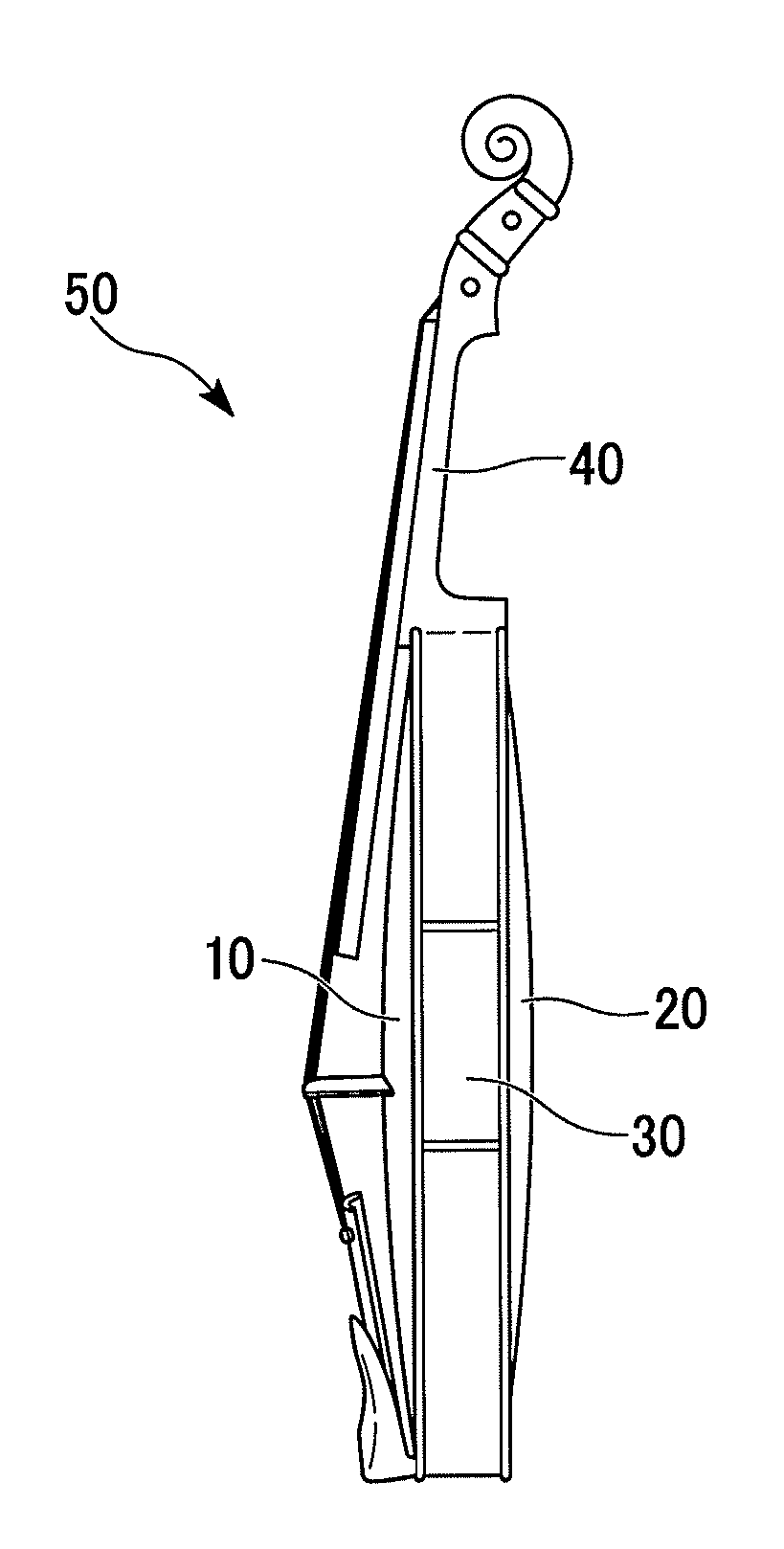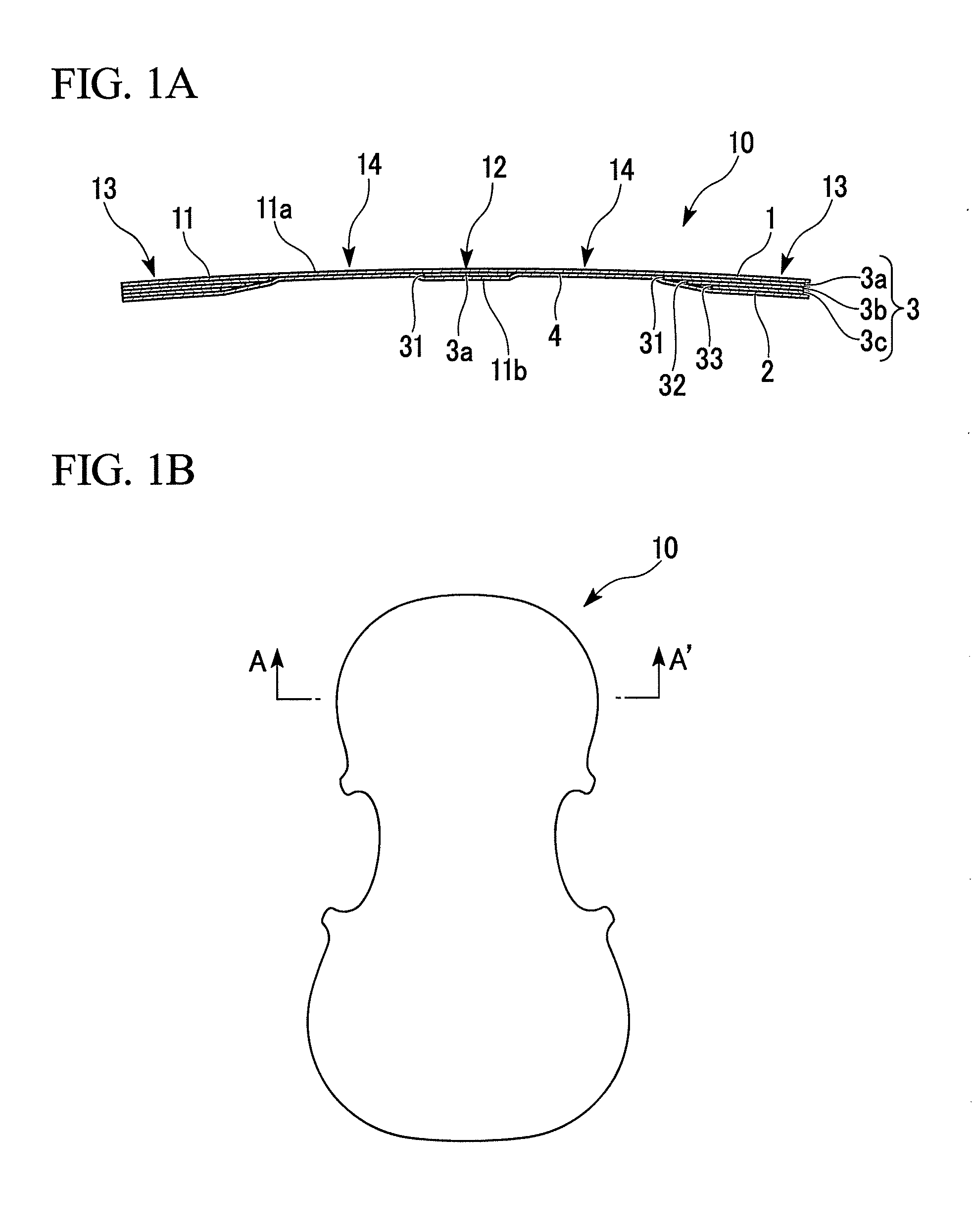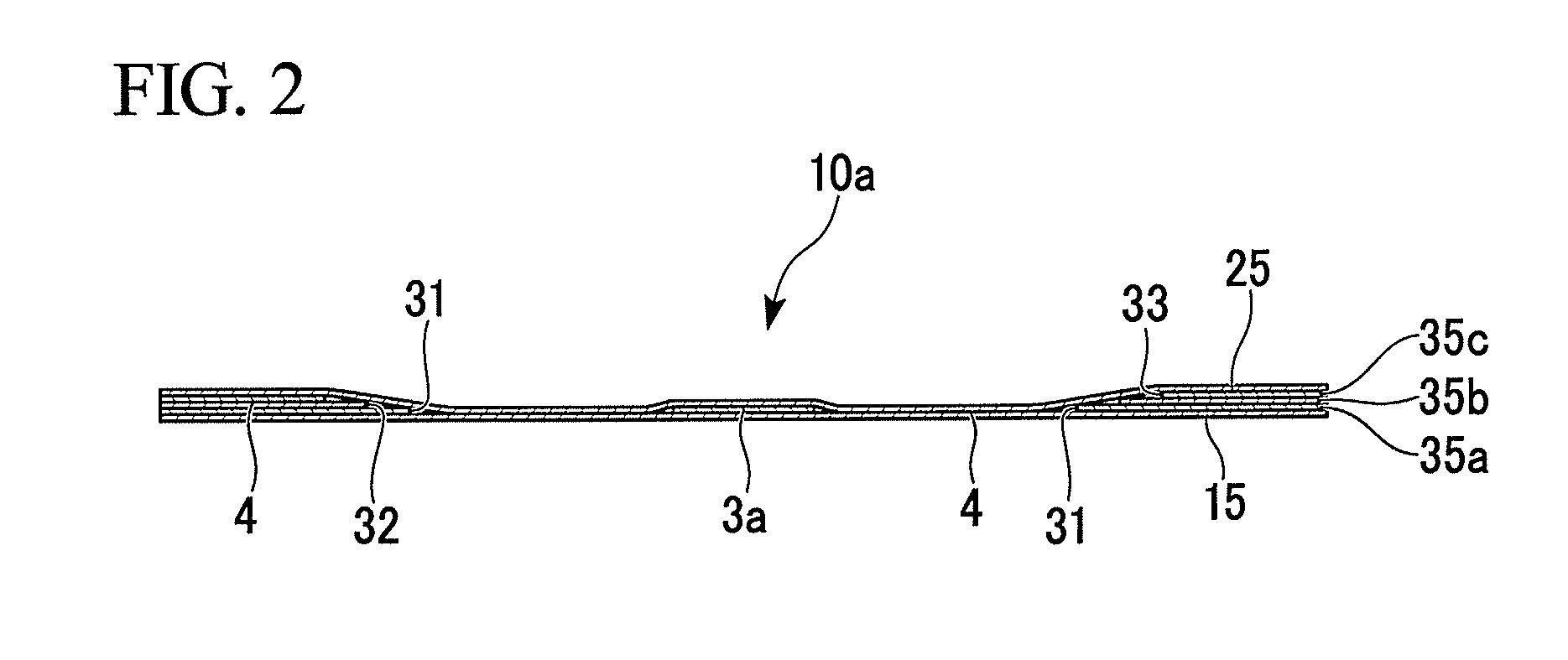Board for stringed instrument, method of manufacturing board for stringed instrument, and stringed instrument
a manufacturing method and stringed instrument technology, applied in the field of stringed instruments, can solve the problems of unsatisfactory acoustic characteristics, high labor intensity, and low material yield at about 10%, and achieve the unique vibration of the violin family, the effect of small density variation and superior acoustic characteristics
- Summary
- Abstract
- Description
- Claims
- Application Information
AI Technical Summary
Benefits of technology
Problems solved by technology
Method used
Image
Examples
first embodiment
[0031]In this embodiment, a front plate of a violin will be described as an example of a board for a stringed instrument according to the present invention. FIG. 1A is a cross-sectional view showing a front plate of a violin according to a first embodiment of the present invention in a width direction thereof. FIG. 1B is a plan view showing the front plate shown in FIG. 1A. FIG. 1A is a cross-sectional view taken along line A-A′ of FIG. 1B
[0032]As shown in FIG. 1A, the front plate 10 of the violin includes a laminated plate 11 having a camber shape which is curved to be convex toward the side of a front surface 11a (top surface in FIG. 1A).
[0033]The laminated plate 11 is partially different in thickness as shown in FIG. 1A. Regarding the thickness of the laminated plate 11, the thickness of peripheral edges 13 is the thickest, the thickness of a center portion 12 is the second thickest, and thin portions 14 are formed between the center portion 12 and the peripheral edges 13. As sho...
second embodiment
[0070]In this embodiment, a back plate of a violin will be described as an example of a board for a stringed instrument according to the present invention.
[0071]The back plate of the violin according to the embodiment is different from the front plate 10 according to the first embodiment shown in FIG. 1A, in that: planar shapes of the veneers which form the core plate are determined according to a thickness distribution in consideration of a function as the back plate; and it is preferable that maple be used as the materials of the front surface plate, the back surface plate, and the core plate.
[0072]In the back plate according to the embodiment, it is more preferable that all of the front surface plate, the back surface plate, and the core plate be made of maple. By allowing all the veneers to be made of maple, a higher function as the back plate can be obtained, and the acoustic quality of a violin using this back plate can be further improved. In addition, in the back plate accor...
PUM
| Property | Measurement | Unit |
|---|---|---|
| Thickness | aaaaa | aaaaa |
Abstract
Description
Claims
Application Information
 Login to View More
Login to View More - R&D
- Intellectual Property
- Life Sciences
- Materials
- Tech Scout
- Unparalleled Data Quality
- Higher Quality Content
- 60% Fewer Hallucinations
Browse by: Latest US Patents, China's latest patents, Technical Efficacy Thesaurus, Application Domain, Technology Topic, Popular Technical Reports.
© 2025 PatSnap. All rights reserved.Legal|Privacy policy|Modern Slavery Act Transparency Statement|Sitemap|About US| Contact US: help@patsnap.com



